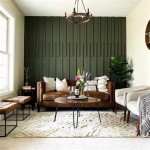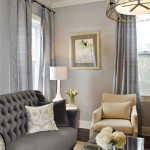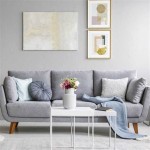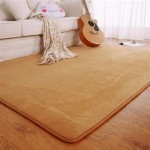Carpet Color Ideas For Living Room
The living room, often considered the heart of the home, serves as a space for relaxation, entertainment, and family gatherings. The selection of appropriate furnishings, including carpet color, plays a significant role in establishing the room's aesthetic and functional characteristics. A carefully chosen carpet color can influence the perceived size of the room, the overall mood, and the way other design elements interact. This article examines various carpet color options for living rooms, discussing their potential impact and providing insights into factors to consider during the selection process.
Understanding the Impact of Color Psychology
Color psychology posits that different colors can evoke specific emotions and influence behavior. Applying these principles to carpet color selection can help create a living room that aligns with the desired atmosphere. For example, warmer colors like red, orange, and yellow tend to create a sense of energy and excitement. These colors can make a large room feel cozier and more intimate, but may be overwhelming in smaller spaces. Conversely, cooler colors such as blue, green, and purple often promote feelings of calmness and tranquility. These colors can visually expand a small room and create a more relaxed environment.
Neutral colors, including gray, beige, cream, and white, provide a versatile foundation for the living room. These colors are generally unobtrusive and allow other design elements, such as furniture, artwork, and accessories, to take center stage. Neutral carpets are also advantageous because they tend to have wider appeal and can easily adapt to changing design trends. However, it is essential to consider the specific undertones of neutral colors, as they can lean towards either warm or cool shades and influence the overall ambiance of the room.
The intensity or saturation of a color also plays a significant role. Highly saturated colors are more vibrant and attention-grabbing, while less saturated colors are more muted and subtle. A brightly colored carpet can be a bold statement piece, but it may also limit the versatility of the room's design. A subtly colored carpet, on the other hand, provides a neutral background that can be easily accessorized with different accent colors.
Factors Influencing Carpet Color Selection
Several factors should be considered when selecting a carpet color for the living room. These include the size of the room, the amount of natural light, the existing color palette, the style of the furniture, and the intended use of the space. Failing to consider these elements can lead to a discordant or unbalanced design.
The size of the room is a crucial factor. Lighter colors tend to make a room appear larger and more open, while darker colors can make a room feel smaller and more intimate. In a small living room, it is generally advisable to choose a light or medium-toned carpet to avoid overwhelming the space. Conversely, in a large living room, a darker carpet can help ground the room and create a more defined space. The amount of natural light entering the room also impacts the appearance of colors. Colors tend to look brighter and more vibrant in well-lit rooms, while they may appear darker and more muted in rooms with limited natural light.
The existing color palette should also be taken into account. The carpet color should complement the colors of the walls, furniture, and other accessories. It is generally advisable to choose a carpet color that is either a similar shade to the existing color palette or a complementary color that provides a pleasing contrast. Alternatively, one can select a carpet with a pattern that incorporates elements from the existing color scheme.
The style of the furniture also influences carpet color selection. Modern furniture often pairs well with neutral carpets or carpets with geometric patterns. Traditional furniture tends to complement carpets in warmer colors or carpets with intricate patterns. The intended use of the space should also be considered. A living room that is frequently used for entertaining may benefit from a darker carpet that can better conceal stains and wear. A living room that is primarily used for relaxation may benefit from a lighter carpet that creates a more calming atmosphere.
Exploring Specific Carpet Color Options
Several carpet color options offer distinct advantages for the living room. These colors range from classic neutrals to bolder and more vibrant hues. Each color option possesses unique characteristics that can contribute to the overall aesthetic and functionality of the space.
Gray: Gray carpets have emerged as a popular choice for living rooms due to their versatility and neutrality. Gray carpets can complement a wide range of color palettes and design styles. Light gray carpets can create a bright and airy feel, while dark gray carpets can add a touch of sophistication and drama. Gray carpets are also relatively easy to maintain, as they tend to conceal dirt and stains well. The undertone of the gray should be considered, with cool grays pairing better with modern aesthetics and warm grays working well in more traditional settings.
Beige: Beige carpets offer a warm and inviting feel, creating a comfortable and relaxing atmosphere. Beige carpets are also highly versatile and can complement a wide range of furniture styles and color palettes. They provide a neutral backdrop that allows other design elements to stand out. However, beige carpets can be more susceptible to staining than darker colors, requiring more frequent cleaning. To add visual interest, consider incorporating patterns or textures within the beige carpet.
Blue: Blue carpets evoke feelings of calmness and tranquility, making them an excellent choice for creating a relaxed living room. Light blue carpets can make a room feel larger and more open, while dark blue carpets can add a touch of elegance and sophistication. Blue carpets can also complement a wide range of color palettes, particularly those incorporating white, gray, and other cool tones. Depending on the specific shade of blue, different effects can be achieved. For instance, a navy blue carpet can create a formal and sophisticated atmosphere, while a turquoise carpet can evoke a more playful and relaxed vibe.
Green: Green carpets bring a sense of nature and freshness into the living room. Green carpets can create a calming and restorative atmosphere, making them ideal for spaces intended for relaxation. Light green carpets can brighten up a room and make it feel more spacious, while dark green carpets can add a touch of richness and depth. Green carpets can also be paired with a variety of color palettes, particularly those incorporating brown, beige, and other earthy tones. Consider the specific shade of green; a forest green carpet will have a different impact than a lime green carpet.
Patterned Carpets: Patterned carpets can add visual interest and personality to the living room. Geometric patterns can create a modern and dynamic feel, while floral patterns can add a touch of elegance and sophistication. Patterned carpets can also help to conceal dirt and stains, making them a practical choice for high-traffic areas. However, it is important to choose a pattern that complements the existing design elements in the room. Overly busy patterns can overwhelm a space, especially in smaller living rooms. Consider the scale of the pattern; larger patterns work well in larger rooms, while smaller patterns are more suitable for smaller spaces.
White or Off-White: White or off-white carpets create a crisp, clean, and sophisticated look. They can make a living room appear larger, brighter, and more airy. White carpets are versatile and can easily adapt to changing design trends. However, they are notoriously difficult to maintain, as they readily show dirt and stains. White carpets are best suited for low-traffic areas and spaces where spills are unlikely to occur. Consider using stain-resistant treatments and establishing a regular cleaning schedule to keep white carpets looking their best.
Selecting the ideal carpet color for a living room requires careful consideration of various factors, including color psychology, room size, lighting conditions, existing color palettes, furniture styles, and intended use. By thoroughly evaluating these elements, homeowners can create a living room that is both aesthetically pleasing and functionally suited to their needs and preferences. A well-chosen carpet color can enhance the overall ambiance of the room, contributing to a comfortable and inviting space for relaxation, entertainment, and social gatherings.

The Best Carpet Colors To Complement Your Home Decor

Designing With Carpet Couristan

7 Best Carpet In Living Room Ideas Designs Home Decor

Designers Top Pick Most Popular Carpet Color Trends For 2024 Elizabethtown Flooring

Carpet Colours Contemporary Living Room Melbourne By Godfrey Hirst Houzz Ie

Carpet Can Be Chic Living Room Ideas For A Sensational Floor Groysman Construction Remodeling

Choosing The Perfect Carpet Color For Your Living Room

Tips For Choosing The Best Carpet Color Your Walls

These Rug And Carpet Color Ideas Will Elevate Your Flooring

5 Tips To Choose The Perfect Rug Color For Your Home








